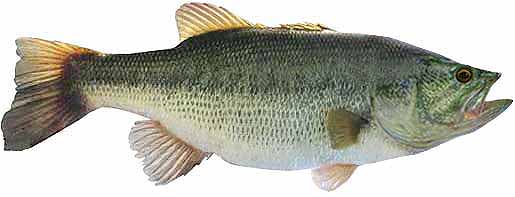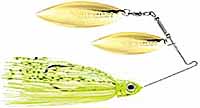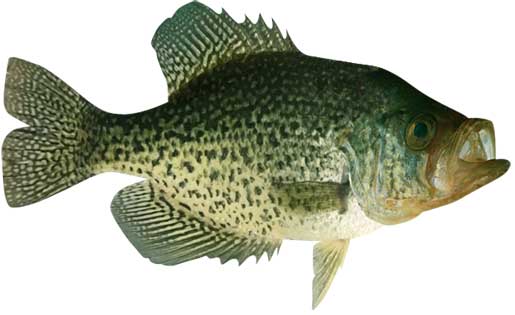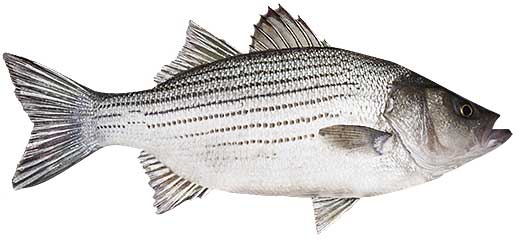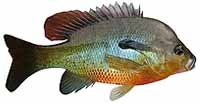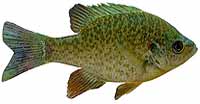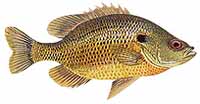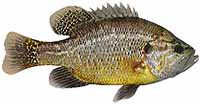Fishing Report For The St Johns River, FL
By Rick Seaman
July 30, 2025

Fishing Reports
Popular Fish Species St Johns River, FL
Largemouth Bass
Current Report: Good
SUMMER. The weather is hot and muggy, and water temperatures are in the 80's. Bass are feeding shallow early and late in the day, where they are being caught on frogs, topwater, crankbaits and swimbaits. Wacky-rigged stick worms and jigs are catching finicky bass when the bite is slow. Largemouth bass here feed on gizzard shad, blueback herring, threadfin shad, small sunfish and crawfish. During the hotter parts of the day, they are being caught on in shallow .shady cover, or on channel edges, and ledges 10 to 15 feet deep. The best reports seem to be from anglers fishing around Lake George, Lake Monroe, Taylor Creek and Lake Poinsett, just to mention a few.
FALL. As Fall arrives, bass here will follow schools of baitfish into coves and shallow bays, where swimbaits, crankbaits, jerkbaits and slow-rolled spinnerbaits are typically successful.
WINTER. Winter will isolate them slightly deeper around cover on, flats, points and creek channels. They can be found from 8 to 15 feet deep. Here they hold and continue to feed, but less frequently, awaiting warmer water to return in Spring.
SPRING. Once water temperatures rise into the mid 60's, largemouth will move from wintering spots to shallower water just outside spawning areas. Jerkbaits, spinnerbaits and vibrating jigs typically get bites just away from the shoreline. At this time they are focused on the spawn. Once water warms into the high 60's, they will move into 1 to 4 feet of water, and create nests, then lay their eggs. Immediately afterwards, females move to deeper water and males remain to guard the eggs, and then the fry. After a couple weeks, the males also move to slightly deeper water. Crankbaits, vibrating jigs, plastic worms and swimbaits are catching bass during this period.
Black Crappie
Current Report: Good To Very Good
SUMMER. Water temperatures are currently in the mid to high 80's, and crappie fishing has been good. Now that the spawn is over, and the hot Summer sun is warming the shallows, crappie have retreated to depths of 6 to 15 feet, or embedded in the shade of heavy vegetation. This is a good time to focus around bridge pilings. The section of the river around Black Creek is a good area for crappie. Anglers are also locating schools of crappie hanging over deep timber, around concrete pilings, above rocky structures and around creek channel edges.
FALL. Baitfish, which will be moving into shallow flats, coves and bays, will draw crappie into these areas, where they are feeding heavily in preparation for the cold Winter. Small spoons, along with minnows and crappie jigs, are good options during this feeding marathon.
WINTER. Once the shallows start cooling rapidly, crappie will migrate to deeper holding areas, mostly off shore. At this time they are typically caught using a very slow presentation, around 15 feet of water. Even if they are not directly on the bottom, they are relating to some cover, or structure change, directly below them.
SPRING. In early Spring, crappie begin staging in 6 to 10 feet of water, just outside spawning bays and shallow flats. Spring is prime time to be on the water, as crappie have moved shallow to spawn. At that time, they are typically caught in 2 to 4 feet of water. Docks, brush, wood and heavy vegetation are where most anglers are catching good numbers using small crappie jigs or live minnows. After the spawn, crappie move outside the spawning area and hold on the closest cover. Once they move off the beds, anglers are reporting good success using fish finders and forward facing sonar to locate schools of crappie, which tend to stack vertically around cover. Light tackle with 4 lb to 8 lb line is a popular choice.
Hybrid Striped Bass
Current Report: Good
SUMMER. In Summer, these wipers typically hang out in deeper water, staying close to schools of bait. Sometimes during the heat of the day they move close to the bottom, 15 feet deep or deeper. Morning often draws hybrid stripers to much shallower water, so look for them around 3 to 10-foot deep as they feed on shallow, roaming schools of threadfin shad and gizzard shad. Being successful at fishing for stripers in Summer is a matter of locating schools of bait, and the wolf packs of wipers are likely to be nearby. Nice wipers, some up to 10 or 15 pounds, are being caught by casting, trolling or drift fishing. Live shad, spoons, blade baits, crankbaits, and cut bait are all effective here.
FALL. In Fall, hybrid stripers return to inflowing water. Look for deeper sections in the river channels, and fish them thoroughly. Most any lure that resembles shad will catch wipers at this time of year. Tailwaters often hold healthy concentrations of fish.
WINTER. In Winter, hybrid stripers again hang out in deeper water and feed close to the bottom, often 15 to 20 feet deep or deeper. Warm afternoons occasionally draw stripers shallower, so look for them around the 10-foot range as they feed on roaming schools of threadfin shad and gizzard shad. Nice fish are being caught while trolling or drift fishing. Spoons, swimbaits, blade baits, crankbaits, live shad and cut bait are typically effective this time of year. Due to slower metabolism, anglers are triggering more strikes by making slower presentations.
SPRING. When water temperatures rise into the mid 60's now, it's the ideal time for the hybrid stripers to spawn. The lake record is over 16 pounds, and many anglers believe there are bigger ones to be caught. The lake is loaded with hybrids averaging 3 to 5 pounds, with plenty of 8 or 10 pound fish being caught. In Spring, work the upper end of the lake, especially if there is inflowing water. If they spawn, this is where they will lay eggs in the flowing water. Look for deeper holes in the river channels, as they are a good holding place for hybrid stripers.
Fishing Video
Fish species to fish for...
Guide to fishing for largemouth bass, channel catfish, white catfish, black crappie, bluegill, redbreast sunfish, redear sunfish, spotted sunfish, warmouth, striped bass and hybrid stripers at The St Johns River in Florida.

The St Johns River is over 300 miles long with hundreds of miles of shoreline. The primary fish species in the river include bass, crappie, hybrid stripers, striped bass, catfish, and several species of sunfish. Places to fish from the bank are available all up and down the river.
Primary fish species to catch
Click images for fishing tips and details about each species.
Today's Weather & Forecast
Fishing Boat Rentals
Click here for fishing boat rentals.
Public Boat Launch Ramps & Landings
Click here for boat ramps.
Marinas
Click here for marinas.
Fishing License
Click here for a Florida Fishing License.
Map - Fishing & Access
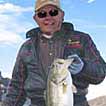
Rick Seaman is a fishing enthusiast with over five decades of fishing experience, a retired tournament fisherman, author of numerous published articles on fishing, and co-author of the book "Bass Fishing - It's not WHAT you throw, It's WHERE you throw it".
Contact Information
The St Johns River
St Johns River Water Mgmt District
4049 Reid Street
Palatka, FL 32177
386 329-4500
Fishing lakes in each state
073025
The St Johns River, Florida Report
FLORIDA


Information about fishing lakes in Florida
The St Johns River, in northeast Florida, offers rental boats and great fishing for bass, striped bass, catfish, crappie and several species of sunfish.


